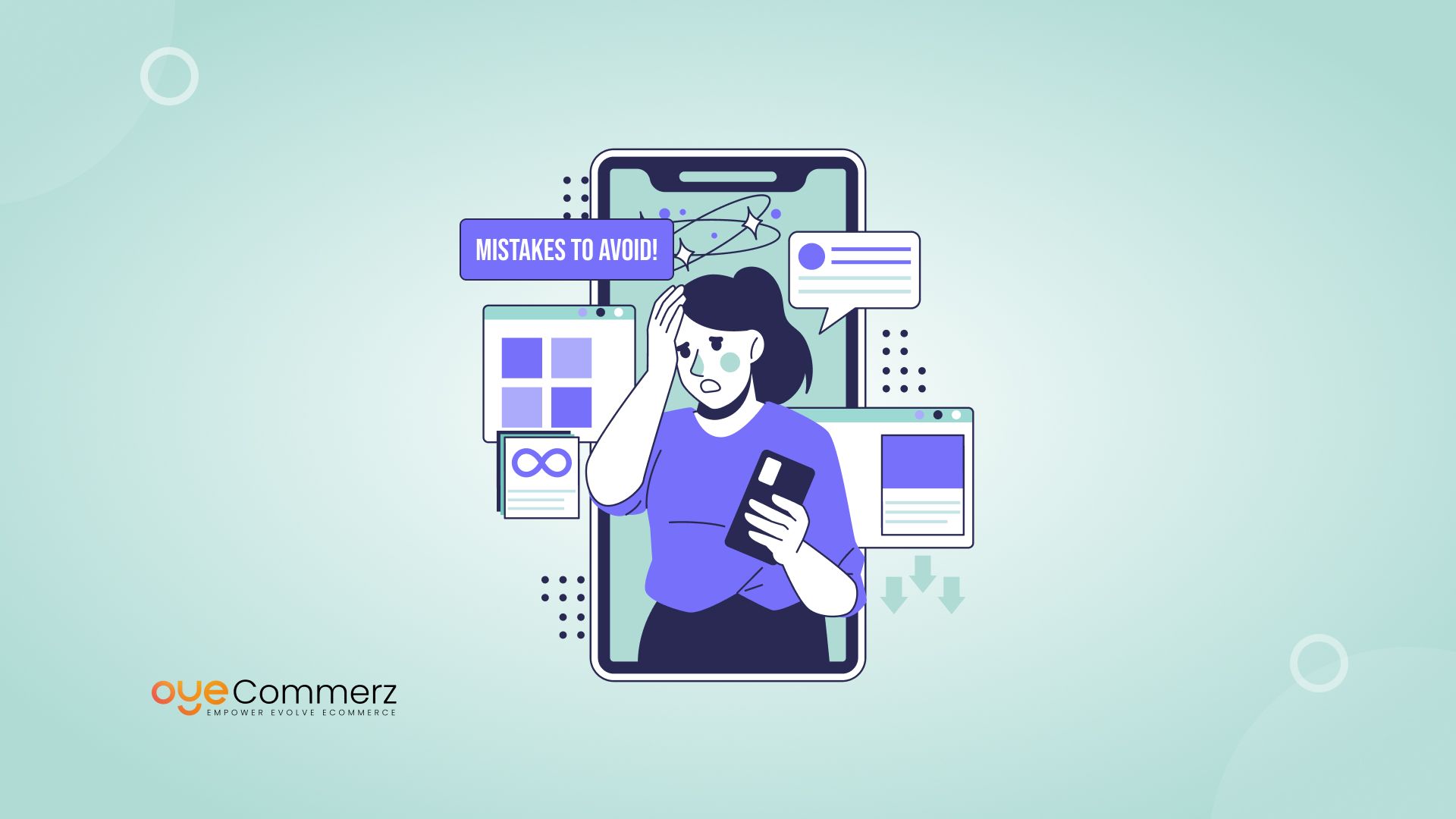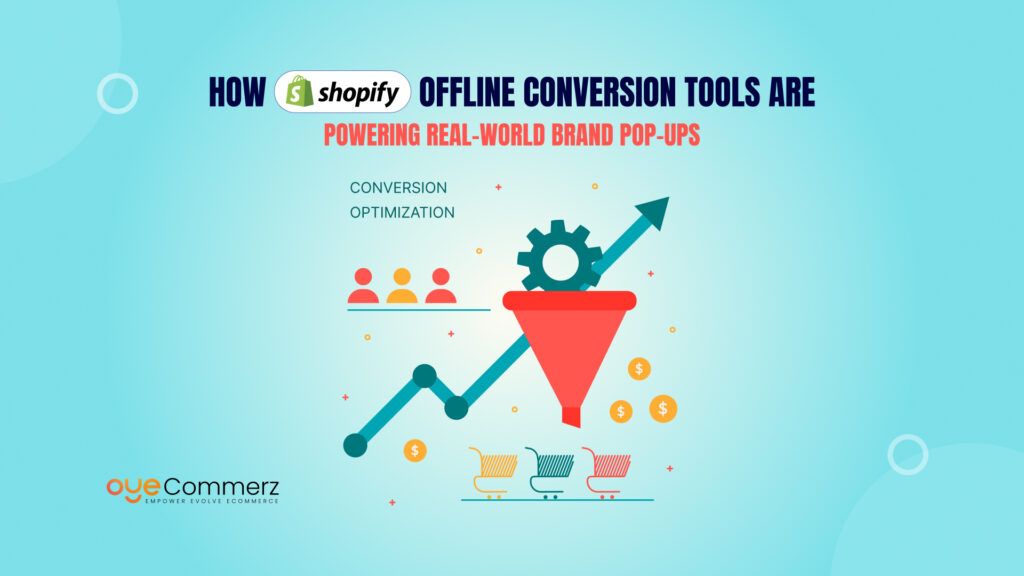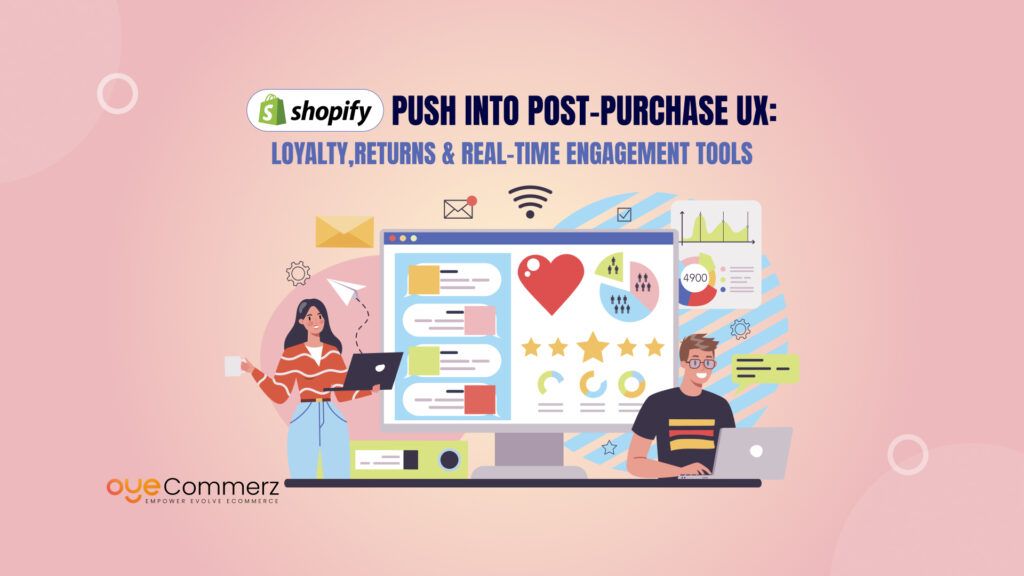Have you ever installed a Public Shopify app, only to delete it minutes later because it didn’t work as expected? You’re not alone. The harsh truth is that most public Shopify apps fail, with many struggling to get even 100 active users.
If you’re an existing Shopify business owner thinking about app development, you might wonder: Why do some apps thrive while others disappear? The answer lies in five common mistakes that cause apps to fail—poor mar oket research, bad user experience, pricing missteps, compliance issues, and lack of customer support.
But here’s the good news: you can avoid these pitfalls and build a Shopify app that merchants love. In this guide, we’ll break down why so many public Shopify apps fail and, more importantly, how you can make sure yours doesn’t. Let’s dive in!
Table of Contents
ToggleThe 5 Most Common Mistakes That Lead to Failure
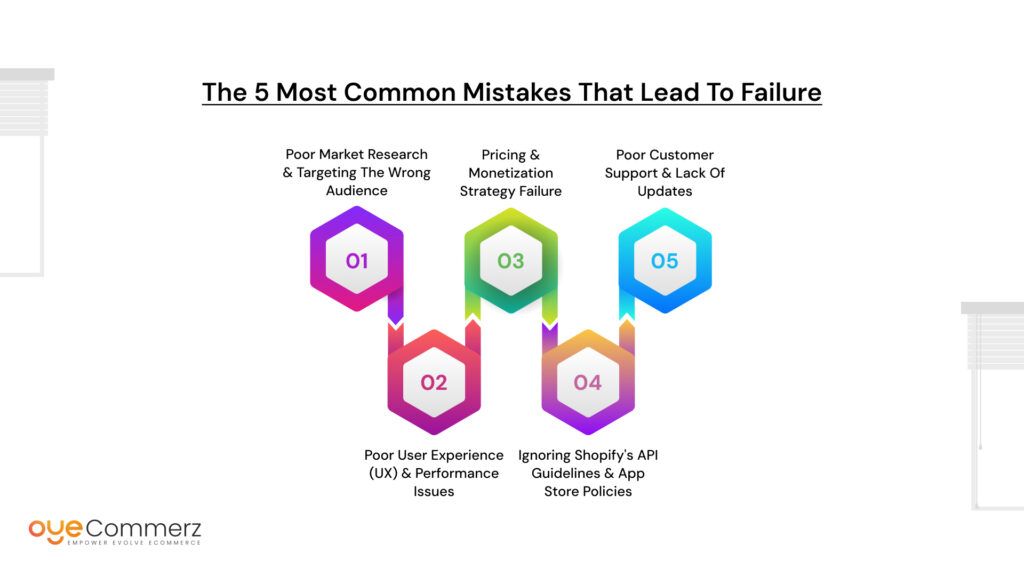
While many public Shopify apps fail, the good news is that these failures can be prevented with the right strategies. Below, we outline key steps to ensure your app not only survives but thrives in the competitive Shopify ecosystem.
1. Conduct Thorough Market Research
Why It Matters:
Many public Shopify apps fail because developers don’t validate their ideas before building them. Successful apps are based on real merchant needs and market gaps.
How to Get It Right:
✔️ Use tools like Shopify’s App Store analytics, forums, and surveys to gather insights.
✔️ Identify underserved niches or pain points that current apps fail to address.
✔️ Conduct competitor research to find unique value propositions (UVP).
Example:
Instead of launching another generic SEO app, you could develop an AI-driven SEO optimizer specifically designed for Shopify product pages.
2. Focus on User-Centered Design & Performance
Why It Matters:
Even if an app solves a real problem, bad UX and slow performance can lead to uninstallations. Many public Shopify apps fail because they frustrate users instead of simplifying tasks.
How to Get It Right:
✔️ Follow Shopify Polaris design guidelines for a seamless experience.
✔️ Optimize app performance to ensure fast loading times.
✔️ Simplify the onboarding process with tooltips, tutorials, or demo accounts.
Example:
A subscription management app that integrates smoothly with Shopify’s checkout and has an intuitive interface will retain more users.
3. Set a Competitive Yet Profitable Pricing Strategy
Why It Matters:
Pricing is a major reason why public Shopify apps fail—either they charge too much and drive users away or charge too little and can’t sustain the business.
How to Get It Right:
✔️ Offer a free trial to let merchants experience value before committing.
✔️ Provide tiered pricing plans to cater to different business sizes.
✔️ Analyze competitor pricing and find a balance between affordability and profitability.
Example:
A marketing automation app offering a 7-day free trial + tiered pricing based on usage will likely convert more customers than a flat $50/month fee.
4. Stay Compliant with Shopify’s Guidelines & API Updates
Why It Matters:
Many public Shopify apps fail because they ignore Shopify’s evolving policies and API changes, leading to rejection or delisting.
How to Get It Right:
✔️ Regularly check Shopify’s API changelog and developer documentation.
✔️ Ensure your app follows Shopify’s data privacy and security policies.
✔️ Test your app thoroughly in Shopify’s Partner Dashboard before submitting.
Example:
An inventory management app that stays updated with Shopify’s latest API changes will avoid compatibility issues and continue functioning smoothly.
5. Invest in Customer Support & Continuous Improvement
Why It Matters:
A major reason public Shopify apps fail is poor customer support and lack of updates. Merchants expect quick issue resolution and ongoing improvements.
How to Get It Right:
✔️ Offer multiple support channels (live chat, email, knowledge base).
✔️ Respond to customer inquiries within 24 hours to maintain trust.
✔️ Regularly update your app based on user feedback and industry trends.
Example:
An order tracking app that actively fixes bugs, adds requested features, and provides 24/7 support will generate positive reviews and long-term users.
By addressing these common pitfalls, you can significantly increase your chances of success in the Shopify App Store. While many public Shopify apps fail, those that prioritize market research, UX, pricing, compliance, and support have a much higher chance of thriving.
🔹 Next Step: Ready to take your Shopify app to the next level? Focus on these key areas and start building a profitable, long-term solution for Shopify merchants.
Migration to Shopify – Why Choose Oyecommerz?
Many businesses and developers turn to Shopify for its vast ecosystem, but launching a successful Shopify app isn’t easy. While Shopify provides incredible opportunities, the reality is that many public Shopify apps fail due to poor execution, technical issues, or lack of proper support. If you’re considering migrating your eCommerce platform or developing a Shopify app, partnering with the right experts can make all the difference.
Why Migrate to Shopify?
Shopify is one of the most powerful eCommerce platforms, offering:
✔️ A vast marketplace with millions of merchants.
✔️ A well-documented API and developer-friendly ecosystem.
✔️ Seamless integrations with third-party services.
✔️ High scalability and performance.
However, migrating to Shopify and building a public Shopify app requires expertise to avoid pitfalls that cause many apps to fail. That’s where Oyecommerz comes in.
Migrating to Shopify with Oyecommerz
Migrating to Shopify is a strategic move for businesses seeking a more robust, scalable, and user-friendly e-commerce platform. Understanding the Shopify App Development Timeline can be crucial during this migration process, ensuring smooth integration of essential features and custom functionalities.
Why Migrate to Shopify?
- Scalability: Shopify grows with your business, handling everything from small stores to enterprise-level operations.
- App Ecosystem: A vast array of apps to enhance your store’s performance and customer experience.
- User-Friendly Interface: Simplified backend makes management easier for non-technical users.
How Oyecommerz Simplifies Your Shopify Migration
Migrating to Shopify involves more than just transferring data; it requires careful planning, execution, and testing to align with the Shopify App Development Timeline. Oyecommerz ensures a seamless migration experience by handling every aspect of the process.
Our Migration Process:
- Assessment & Planning:
- Analyze current e-commerce setup.
- Identify necessary customizations and integrations.
- Data Migration:
- Transfer products, customers, and order histories.
- Ensure data accuracy and integrity.
- App Integration & Custom Development:
- Implement essential apps.
- Develop custom features if needed.
- Testing & Optimization:
- Conduct rigorous testing to ensure functionality.
- Optimize performance for a smooth user experience.
Why Choose Oyecommerz?
- Expertise in Shopify Migration: Years of experience migrating stores of all sizes.
- Seamless Integration with Shopify Apps: Ensuring compatibility with your store’s needs.
- Timely Execution: Adhering to the Shopify App Development Timeline for efficient project completion.
Ongoing Support: Post-migration assistance for continuous store performance.
How Oyecommerz Helps You Avoid Common Shopify Migration & App Development Failures
1. Seamless Platform Migration Without Data Loss
- Ensure all products, customers, and order history are transferred correctly.
- Prevent issues like data corruption, missing SKUs, or inventory mismatches that often happen during migration.
- Maintain SEO rankings by handling URL redirects properly.
2. Optimized Shopify App Development to Prevent Failure
- Our expert team follows Shopify’s best practices to ensure your app meets performance, UX, and compliance standards.
- Avoid common reasons why public Shopify apps fail, such as slow performance, API issues, and poor user adoption.
3. Compliance with Shopify’s API & App Store Guidelines
- Many public Shopify apps fail due to policy violations or outdated API usage.
- We ensure your app stays compliant, preventing rejection or removal from the Shopify App Store.
4. Custom Integrations & Feature Enhancements
- Need custom Shopify functionalities? We build tailor-made solutions to match your business needs.
- Whether it’s payment gateways, automated order processing, or subscription models, we help you integrate seamlessly.
5. Ongoing Support & Maintenance
- Post-migration and post-launch support to fix bugs, update APIs, and optimize performance.
- Many public Shopify apps fail because they lack continuous updates—our team ensures your app evolves with Shopify’s latest changes.
Why Choose Oyecommerz?
✅ Expert-Led Shopify Migrations & App Development
✅ 100% Data Security & Zero Downtime Migration
✅ API-Compliant & High-Performance Shopify Apps
✅ Ongoing Support to Ensure Long-Term Success
🚀 Don’t let your Shopify app fail! Whether you’re migrating to Shopify or developing a public app, Oyecommerz ensures you do it the right way.
Contact to Migrate your Site to Shopify Now
How to Avoid These Mistakes & Build a Successful Shopify App
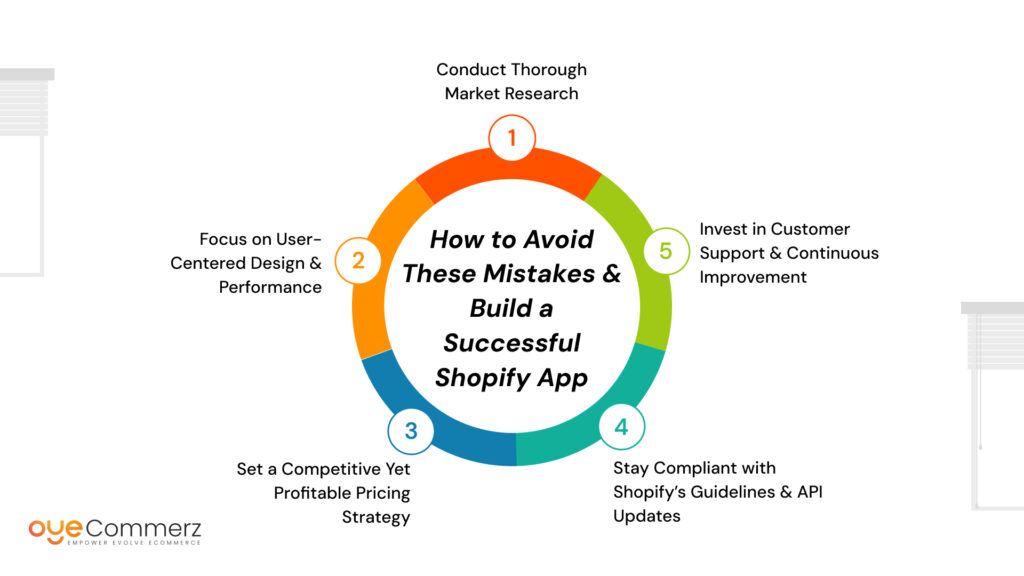
While many public Shopify apps fail, the good news is that these failures can be prevented with the right strategies. Below, we outline key steps to ensure your app not only survives but thrives in the competitive Shopify ecosystem.
1. Conduct Thorough Market Research
Why It Matters:
Many public Shopify apps fail because developers don’t validate their ideas before building them. Successful apps are based on real merchant needs and market gaps.
How to Get It Right:
✔️ Use tools like Shopify’s App Store analytics, forums, and surveys to gather insights.
✔️ Identify underserved niches or pain points that current apps fail to address.
✔️ Conduct competitor research to find unique value propositions (UVP).
Example:
Instead of launching another generic SEO app, you could develop an AI-driven SEO optimizer specifically designed for Shopify product pages.
2. Focus on User-Centered Design & Performance
Why It Matters:
Even if an app solves a real problem, bad UX and slow performance can lead to uninstallations. Many public Shopify apps fail because they frustrate users instead of simplifying tasks.
How to Get It Right:
✔️ Follow Shopify Polaris design guidelines for a seamless experience.
✔️ Optimize app performance to ensure fast loading times.
✔️ Simplify the onboarding process with tooltips, tutorials, or demo accounts.
Example:
A subscription management app that integrates smoothly with Shopify’s checkout and has an intuitive interface will retain more users.
3. Set a Competitive Yet Profitable Pricing Strategy
Why It Matters:
Pricing is a major reason why public Shopify apps fail—either they charge too much and drive users away or charge too little and can’t sustain the business.
How to Get It Right:
✔️ Offer a free trial to let merchants experience value before committing.
✔️ Provide tiered pricing plans to cater to different business sizes.
✔️ Analyze competitor pricing and find a balance between affordability and profitability.
Example:
A marketing automation app offering a 7-day free trial + tiered pricing based on usage will likely convert more customers than a flat $50/month fee.
4. Stay Compliant with Shopify’s Guidelines & API Updates
Why It Matters:
Many public Shopify apps fail because they ignore Shopify’s evolving policies and API changes, leading to rejection or delisting.
How to Get It Right:
✔️ Regularly check Shopify’s API changelog and developer documentation.
✔️ Ensure your app follows Shopify’s data privacy and security policies.
✔️ Test your app thoroughly in Shopify’s Partner Dashboard before submitting.
Example:
An inventory management app that stays updated with Shopify’s latest API changes will avoid compatibility issues and continue functioning smoothly.
5. Invest in Customer Support & Continuous Improvement
Why It Matters:
A major reason public Shopify apps fail is poor customer support and lack of updates. Merchants expect quick issue resolution and ongoing improvements.
How to Get It Right:
✔️ Offer multiple support channels (live chat, email, knowledge base).
✔️ Respond to customer inquiries within 24 hours to maintain trust.
✔️ Regularly update your app based on user feedback and industry trends.
Example:
An order tracking app that actively fixes bugs, adds requested features, and provides 24/7 support will generate positive reviews and long-term users.
By addressing these common pitfalls, you can significantly increase your chances of success in the Shopify App Store. While many public Shopify apps fail, those that prioritize market research, UX, pricing, compliance, and support have a much higher chance of thriving.
🔹 Next Step: Ready to take your Shopify app to the next level? Focus on these key areas and start building a profitable, long-term solution for Shopify merchants.
Shopify App Success vs. Failure – Comparison Table
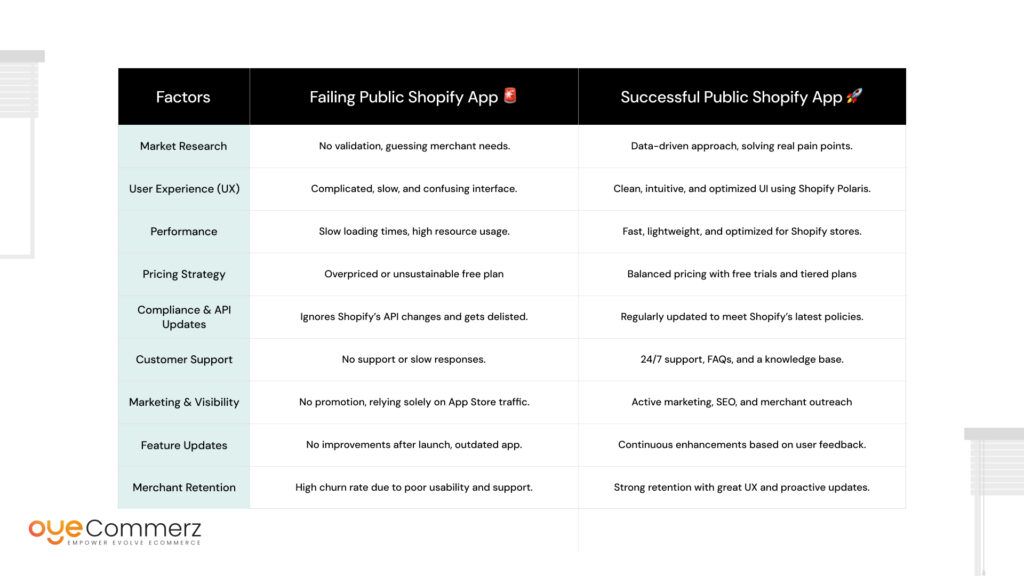
Not all Shopify apps succeed—many struggle with adoption, performance, and compliance. In fact, a significant number of public Shopify apps fail due to mistakes that could have been avoided. Below is a side-by-side comparison of what separates failing apps from successful ones.
Why Do So Many Public Shopify Apps Fail?
Many developers launch a Shopify app without fully understanding the competition, merchant needs, or Shopify’s evolving ecosystem. The main reasons public Shopify apps fail include:
✔️ Lack of proper market research before development.
✔️ Poor UX/UI design, making the app difficult to use.
✔️ Ignoring Shopify API updates, leading to broken functionalities.
✔️ Weak customer support, causing high churn rates.
✔️ No clear pricing strategy, making it hard to scale.
How to Build a Successful Shopify App
✅ Conduct in-depth market research before development.
✅ Focus on UX and performance optimization for seamless merchant experience.
✅ Stay Shopify API-compliant and follow App Store policies.
✅ Offer competitive pricing with value-based tiers.
✅ Provide excellent customer support with quick response times.
✅ Continuously update the app with new features and improvements.
If you’re planning to build a Shopify app, avoiding these common pitfalls can significantly increase your chances of success. While many public Shopify apps fail, those that prioritize merchant needs, compliance, and long-term support thrive in the Shopify ecosystem.
🚀 Want to ensure your Shopify app succeeds? Learn from these mistakes and build a scalable, high-performing app today!
Conclusion
Building a successful Shopify app is a huge opportunity, but the reality is that many public Shopify apps fail due to avoidable mistakes. From poor market research and weak user experience to pricing missteps and compliance issues, these pitfalls can quickly derail even the most promising apps.
However, failure is not inevitable. By focusing on merchant needs, optimizing user experience, maintaining compliance with Shopify’s API, and delivering top-notch support, developers can create apps that not only survive but thrive in the competitive Shopify App Store.
Key Takeaways to Avoid Failure
✅ Conduct thorough market research before development.
✅ Prioritize user-friendly design and high performance.
✅ Set a competitive yet sustainable pricing strategy.
✅ Stay updated with Shopify’s API and policy changes.
✅ Provide excellent customer support and ongoing feature updates.
Need Help with Shopify Migration or App Development?
If you’re looking to migrate your store to Shopify or develop a high-performing Shopify app, working with experts can save you time and costly mistakes. Oyecommerz specializes in seamless Shopify migration and app development, ensuring that your app follows best practices and avoids common pitfalls that cause public Shopify apps to fail.
🚀 Ready to build a Shopify app that succeeds? Contact Oyecommerz today and take the first step toward success!

